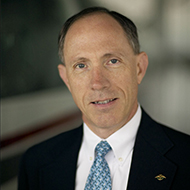Guest editorial: Aftermath
It doesn’t have to be this way
Twenty hours earlier, a 500-foot overcast and heavy rain obscured the view. Yesterday’s forecast was wrong; it was supposed to be much better. A VFR pilot chose to continue into instrument conditions. Flying is not inherently dangerous, but the environment is unforgiving of error—especially judgment regarding weather.
Here in the heartland, the roads run in orderly fashion to cardinal compass points. Farms and homesteads are neatly kept in the wide-open spaces punctuated by lines of trees. It would have been a reasonably safe place to make a precautionary landing, if chosen.
The NTSB investigator was alone in the bean field when I joined him. We walked quietly around the wreck, mud sticking to our boots with the ground still damp from last night’s rain. The conversation was clinical, not wanting to dwell on how these people had died. The aircraft hit steeply nose down, left wing low, at more than 180 knots according to the airspeed indicator—coming to an instant and violent stop. No one walked away from this one.
The engine was partially buried with one curled propeller blade visible. Oil seeped into a crater filled with muddy water. The cockpit was crushed, a mass of shredded, jagged aluminum, upholstery, plastic parts, and avionics. Side forces ejected the right-side door and a few other parts about 20 yards. The windows had fragmented into hundreds of small pieces and were strewn about. Personal effects—a coffee cup, a pair of glasses, and a small bottle of hand lotion—were poignant reminders of human tragedy.
The first responders had removed the two occupants last evening before the investigator arrived. The site was a brutal reminder of the forces involved and required some mental processing for those of us not experienced with this environment.
The engine and airplane manufacturer representatives arrived. This team had worked together too many times and, after some pleasantries, started methodically measuring and documenting. Landing gear, flap, and trim tab position. Check. Control continuity. Check. Gyros? The case was damaged but looked nor-mal otherwise.
The aircraft recovery crew arrived to load the wreckage onto a flatbed and move it to a nearby hangar. Next morning the wreck was pressure washed to clean it up as much as possible. Personal protective gear is always worn by teams as they perform recovery tasks; it’s often uncomfortable but essential.
Was the engine running normally? It looked OK, with some superficial damage, but nothing is left to chance. The valve covers were pulled, and the mangled prop spinner cut away to see if the crankshaft could be rotated, looking for drive train continuity. A reciprocating saw—a tool not usually associated with aviation—shattered the morning calm as it ripped through an unrecognizable wing to inspect gear and flap actuators. Forty-eight hours ago this aircraft was someone’s pride and joy. Now, it was just evidence in a fatal crash investigation and would eventually be discarded.
From interviews and available evidence, it wasn’t this pilot’s first encounter with weather. He wasn’t trained or certificated to fly in the clouds. Past flight tracks showed the horizontal and vertical meanderings of someone who wasn’t used to taking no for an answer even when clouds, prudence, and regulation strongly advised against a trip.
What did we learn? Nothing new, sadly. Visual pilots must stay out of clouds, forecasts aren’t always accurate, and sudden stops are lethal. What’s missing from this essay is the raw emotion of the families and friends, the massive complexity of transferring property, the legal fights, the empty holidays, and the dread that will come every year as the anniversary approaches.
It’s so easy to be critical after the fact; the psychologists call it hindsight bias. None of us would fly in these circumstances if there was a chance it would end this way. But there’s almost always a history of success that emboldens. My hope in relating this tragedy is to revisit the realities of physics, aerodynamics, and human limitations. Would we bet our entire net worth—home, cars, aircraft, life savings, all future earnings—on a card game where winning merely meant arriving at a destination on time? When put in those stark terms, few would take that bet. The risk just isn’t worth the reward. Why gamble, then, with something so much more precious?
Icing, a descent below minimums, clouds, or a thunderstorm encounter—there isn’t a weather condition out there that cannot humble the best pilot. The phenomena may vary, but the outcome will be the same. Sadly, NTSB will investigate a similar scenario again in a few weeks, and the process will begin anew. We should pause to remember that it doesn’t have to be this way.



